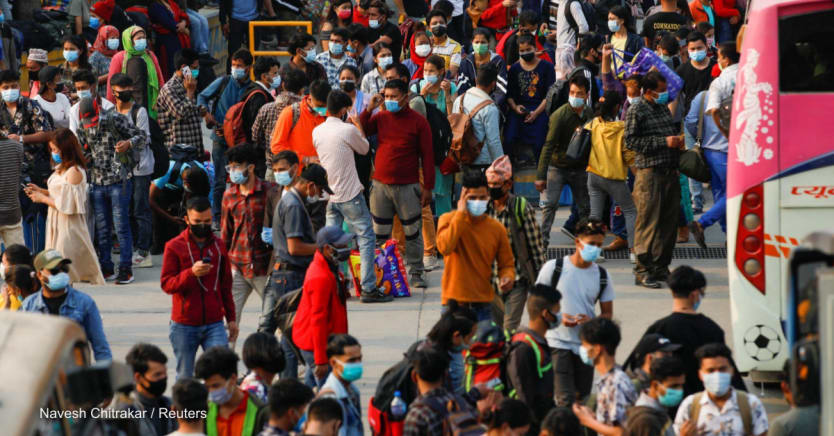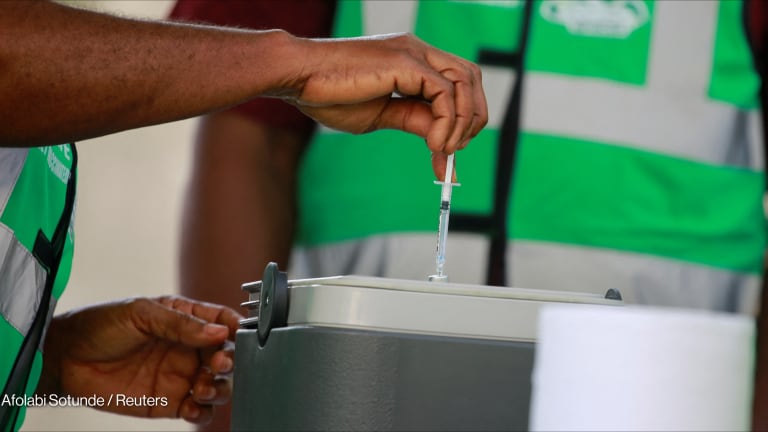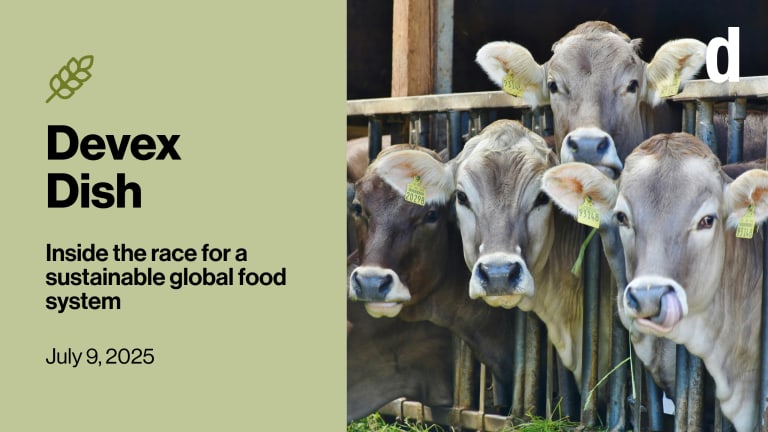
As Nepal reels from a deadly second wave of coronavirus, health professionals have taken it upon themselves to tell the truth.
At a meeting of doctors organized by Kathmandu Metropolitan City on May 11, Dr. Chandra Mani Adhikari, executive director of Shahid Gangalal Heart Center, said, "No one is going to say this, but I [will] say it: our health system has collapsed."
He criticized the health officials including himself for failing to prepare for the second wave of the pandemic. "We cannot increase the number of [ICU] beds overnight. We should now allow patients with mild symptoms to remain in isolation centers," he told the gathering. "We should admit people with moderate or severe symptoms to the hospital. But the reality is a bed will be available only after the death of a patient."
The second wave of COVID-19 has dealt a devastating blow to Nepal, with families scrambling for hospital beds and bottled oxygen amid the shortages of medical supplies in the country of 30 million people. On Wednesday, Nepal recorded 8,064 cases and 246 deaths from COVID-19, the highest single-day fatality, with the death toll reaching 5,657. The country now has over 480,000 total cases.
Hospitals in Kathmandu and major towns across the country face shortages of intensive care unit beds and medical oxygen, causing COVID-19 infected people to isolate at home in case of mild symptoms.
"They wasted the crucial period doing nothing. They should have prepared a detailed plan. ... Even after it was spreading through India, they remained complacent."
— Dr. Baburam Marasini, former director, Nepal health ministry’s Epidemiology and Disease Control DivisionCaught off guard
Health experts say the country saw a surge in COVID-19 cases in the Nepali month of Baishakh, between mid-April and mid-May, after a lull of nearly seven months.
"While the world's attention was largely drawn towards India's emerging humanitarian crisis, a largely unaware Nepal was caught off guard. It was a tall order to escape this new wave that was rampaging through India," Satish Raj Pandey and Shashi Dev Shah, two Nepalese public health professionals, wrote in a widely shared article.
"[But] it was business as usual in Nepal, opening up possibilities of many super-spreader events, some political, others social. Some of these events were even sponsored by the government and leading political parties." The authors were referring to the political rallies that the ruling party and its rivals organized a few months ago across the country.
The period also saw people thronging on the streets to celebrate festivals and families attending wedding parties in crowded spaces. In early April, Nepal's daily cases hovered at a few hundred. A month later, it hit around 7,000, overwhelming the country's poor health care system.
On Tuesday, Nepal's health ministry said the resurgence may have been driven by the double mutant ravaging India after India's CSIR-Institute of Genome and Integrative Biology conducted a genome sequencing of 35 samples from the country. Nepal and India share a 1,800-kilometer open border, under which people of both countries are allowed to travel and work visa-free.
Sign up for Devex CheckUp
The must-read weekly newsletter for exclusive global health news and insider insights.
"Many Nepalis seek medical treatment in India. We depend on India for everything including the (spread of) viral diseases," Yashovardhan Pradhan, a former director general of Nepal's Department of Health Services, told Devex.
"We knew that the returning migrants would spread the disease in the country, but disease surveillance didn't exist at the border." In the end, a combination of factors such as people's behavior and lack of surveillance along the border contributed to the unprecedented spread in Nepal, he said.
Dr. Baburam Marasini, a former director of the epidemiology and disease control division in the ministry, said the government lost the window of opportunity to prepare for the second wave.
"They wasted the crucial period doing nothing. They should have prepared a detailed plan. They should have set up oxygen plants in major hospitals," he said. "Even after it was spreading through India, they remained complacent."
Defying fears that there would be delays in vaccination, Nepal launched a campaign in late January after it received the first consignment of a million doses of Covishield vaccines produced by Serum Institute of India.
After vaccinating front-line health and essential workers and elderly people, it administered the remaining jabs to journalists and diplomatic staff. Its attempt to procure an additional 1 million doses from SII fell flat when the Indian manufacturer failed to deliver due to the rising domestic demands.
"The government's vaccination drive was off to a good start. It could have vaccinated a vast majority of people. But the local agents sought commission from the deal and then the cases in India spiked as it dithered on the decisions," Pradhan, the former top health official, said.
Health experts also pointed out that unlike the first wave with authorities quickly springing into action — sealing the border and setting up quarantine facilities for returnee migrants — they have let their guard down in the wake of the second wave.
Badri Chapagai, a doctor at Bheri Hospital, felt the ramifications at the provincial hospital in the border town of Nepalgunj. "There was an unexpected surge in COVID-19 infections after mid-April," he told Devex.
While the case positivity rates were 10% of the test conducted until the second week of April, it dramatically rose to 73% between mid-April and mid-May, he said. "Last year, we received hundreds of samples for PCR, or polymerase chain reaction, tests. But this year, on the one hand, the virus was more virulent and the screening and testing was zero, on the other," he said.
On the fourth day of the second wave, his hospital was nearing full capacity. Among the 228 COVID-19 patients admitted to the hospital, 182 have moderate symptoms while 42 required ICU beds. First, the hospital provided medical oxygen to critically ill patients through cylinders.
But soon the hospital ran out of it. "Then, we managed to supply it through a pipeline to their beds, in which we could control the supply," said Chapagai, whose 87-year-old grandmother recently died of COVID-19.
"When the second wave engulfed our hospital, it was so fast that we weren’t prepared for it," he said, adding that 135 people have already died in his care. He said the second wave was taking a disproportionate toll on people in their 40s and 50s. "No one can predict the course of this disease," he said.
Bereft of any plan or strategy to tackle the second wave, the government leaned on India for an intervention model and how to respond to the crisis. Last year too, it imposed a nationwide lockdown almost simultaneously with India. But this year, that was a flawed approach, according to Pradhan.
"India has a better health care system than ours. This time, we should have imposed a lockdown as cases spiked in India. But we didn’t do that. Now it's gone out of our control," he said.









